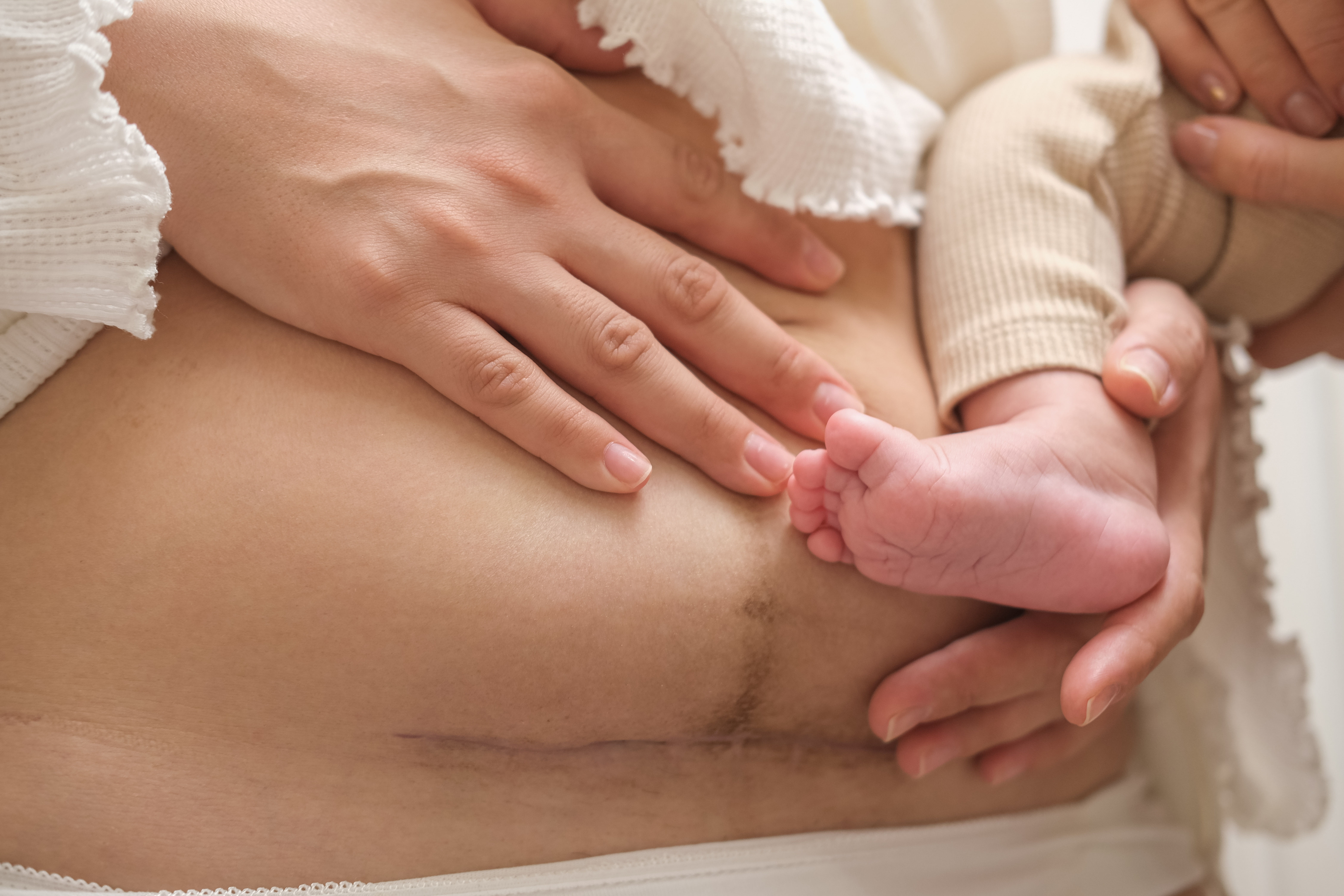Endometriosis Causes Symptoms Treatments
Endometriosis is a chronic condition that causes severe pain, infertility, and emotional distress. Explore all about it and make the right call.

Written by Dr Sonia Bhatt
Last updated on 3rd Jul, 2025
Endometriosis is a complex health issue that primarily affects women of reproductive health. Characterised by the abnormal growth of the tissues that are similar to the lining of the uterus, this condition can lead to severe pain, infertility, and serious issues like cysts. Therefore, early diagnosis and knowledge of endometriosis are important for getting better care and improving the quality of life for women with it.
Causes of Endometriosis
The causes of endometriosis can be broadly characterised in three areas. Here are the details –
Inherited Factors
Genetic factors contribute to the development of endometriosis. Women with a first-degree relative (mother, sister) with endometriosis are more likely to develop this condition.
Hormonal Effects
Experts believe oestrogen-related hormonal alterations are crucial to the development of endometriosis. High oestrogen levels for a prolonged period can cause uterine tissue to develop outside the uterus. Also, hormonal changes during puberty or menstruation may aggravate symptoms.
Immune Response and Inflammatory Processes
Weak immune systems can cause endometriosis as it fails to destroy endometrial cells outside the uterus. These cells then develop, causing swelling, irritation, scar tissue, and adhesions.
Symptoms of Endometriosis
Some of the notable symptoms of endometriosis are –
Pain and Distress
Pelvic pain—often more severe than period cramps—is the hallmark indication of endometriosis. The pain may begin before the period and persist for several days during the cycle. Apart from discomfort, patients frequently suffer lower back and stomach aches. As the situation worsens, it may increase.
Reproductive Issues
Endometriosis can make pregnancy challenging. Women suffering from this condition have obstructed fallopian tubes or damaged ovaries and eggs, making it difficult to conceive.
Menstrual Concerns
Period issues, including excessive bleeding or spotting between cycles, are also typical symptoms of this condition. Over time, these issues may worsen the sexual health of women.
Urinary/Digestion
Endometriosis can impact the urinary and digestive systems, causing gas, diarrhoea, constipation, and illness before or during the period. Painful bowel motions or urine often occur with menstruation. It is tricky to diagnose endometriosis since these gastrointestinal issues might mimic IBS (Irritable Bowel Syndrome).
Consult Top Obstetrics and gynaecologist
Risk Factors
The risk factors associated with endometriosis include the following –
Age and Reproductive Background
Usually, women in their reproductive years, i.e. 20 to 40, are more likely to develop this condition than others. Also, women with early onset of menstruation and prolonged menstrual cycle are more susceptible.
Genetic Background
Endometriosis is more likely to happen if individuals have a family history of the condition. Typically, women with a mother, sister, or any other close relative with endometriosis are more likely to develop this condition.
Lifestyle and Environmental Influences
Social and environmental factors may also cause endometriosis. Individuals who are overweight, consume a high-fat diet, are not involved in ample physical activity and are exposed to harmful chemicals like dioxins are likely to develop this condition. Additionally, smoking and alcohol consumption also increase the risk of developing endometriosis.
Diagnosis of Endometriosis
The diagnosis of endometriosis contains the following procedures –
Assessment of Medical History and Symptoms
The diagnosis of endometriosis begins with a thorough review of the affected individual's medical history and symptoms. Doctors will inquire about periods, pelvic discomfort, and pregnancy issues. After that, they can distinguish endometriosis from other painful illnesses and start treatment accordingly.
Conducting Imaging Tests
Imaging tests, like ultrasound or magnetic resonance imaging (MRI), examine the pelvic organs for cysts or other problems that could be potential signs of endometriosis. However, these tests are not always accurate, and images alone might not show the growths or sores.
Laparoscopic Surgery and Tissue Sampling
The best way to diagnose endometriosis is with laparoscopy, a slightly invasive procedure. During this operation, a small camera is put inside the stomach so the doctor can see the pelvic organs clearly and take samples of tissue that might be endometrial. This process provides more concrete evidence of the disease and its current situation.
Treatment Options
The treatment options for endometriosis include –
Pain Management through Medication
Pain control is usually the first step in treating endometriosis. NSAIDs, which stand for nonsteroidal anti-inflammatory drugs, can help ease pain and swelling. For worse pain, prescription drugs or stronger painkillers may be needed. Treating the endometrial tissue growth and managing the symptoms may also involve hormone therapy.
Hormone-Based Treatments
Many women take hormone therapies to manage their periods and reduce endometriosis. Birth control medications and GnRH agonists can reduce oestrogen and relieve endometriosis symptoms. Additionally, hormone-based therapy may shrink or eliminate uterine growth.
Surgical Treatments
Serious conditions of endometriosis may need surgery. Surgery aims to remove as much endometriosis tissue as possible while preserving the reproductive health of women.
Lifestyle and Home Remedies
Lifestyle changes and home remedies can also help deal with endometriosis. Here are some suggestions –
Following a Nutritious Diet
Eating well can help alleviate the symptoms of endometriosis. Omega-3 fatty acids and other anti-inflammatory foods can help ease pain and swelling. People can also feel better by eating less red meat and more fruits, vegetables, and whole foods.
Managing Stress and Physical Activity
People with endometriosis need to learn how to deal with stress. Prolonged period of excessive stress can make pain and soreness worse. Yoga, swimming, and other forms of gentle exercise can help relieve stress and improve health in general.
Emotional Support and Mental Well-being
Endometriosis may be emotionally draining, so get support. Support groups and therapy can provide a secure space to discuss concerns and solutions. Get mental health support to cope with persistent pain and infertility.
Complications and Long-term Outlook
In terms of complications and long-term issues, here are situations that individuals can face:\
Reproductive Difficulties
Endometriosis can prevent pregnancy, which is its worst impact as pregnancy is difficult due to fallopian tube blockage. However, people with endometriosis can get pregnant through IVF.
Persistent Pain and Exhaustion
Endometriosis causes chronic fatigue and pain. Many people experience constant pain and mental anguish despite medicines. Over time, the discomfort might make daily tasks difficult, reducing productivity.
Effect on Quality of Life
Endometriosis causes discomfort, fatigue, and fertility issues, lowering the quality of life in women. This condition's emotional, physical, and social repercussions require extensive care and assistance.
Ongoing Studies and Future Prospects
Researchers are learning more about endometriosis by studying DNA markers, environmental factors, and new ways to find the disease early. Advanced hormonal medicine and slightly invasive surgical methods can help treat endometriosis. But, researchers are investigating immunotherapy, stem cell treatments, and traditional medicine to help people cope with their conditions.
Conclusion
Endometriosis, a painful and frequently crippling illness, affects many women seeking to have children. Genetics, hormones, and immune system issues are among its primary causes. To manage symptoms and improve quality of life, visit a doctor of diagnosis and start with the treatment. Endometriosis therapy requires timely examination and treatment. Additionally, early identification reduces the risk of infertility and chronic discomfort. As researchers discover new treatments for endometriosis, the future seems bright. Endometriosis patients might expect improved treatment options and outcomes if more people know about, identify, and treat it.
Consult Top Obstetrics and gynaecologist
Consult Top Obstetrics and gynaecologist

Dr Homeira Nishat
Obstetrician and Gynaecologist
34 Years • MBBS, Diploma in Obstetrics & Gynaecology
Bengaluru
Cure Hospital and Clinic, Bengaluru

Dr. Debashree Saha
Obstetrician and Gynaecologist
4 Years • MBBS, MS (Obstetrics & Gynaecology)
Kolkata
DR. DEBASHREE SAHA Clinic, Kolkata

Dr. Saheli Kapat
Obstetrician and Gynaecologist
11 Years • MBBS, DNB Obstetrics & Gynaecology,FMAS(Fellowship in Minimal access surgery)
Kolkata
MCR SUPER SPECIALITY POLY CLINIC & PATHOLOGY, Kolkata

Dr. Somdutta Basu
Obstetrician and Gynaecologist
7 Years • MBBS, MS Obstetrics & Gynaecology
Bansdroni
Siddhita Healthcare., Bansdroni

Dr. Shruti I
Obstetrician and Gynaecologist
7 Years • MBBS, MS (OBSTETRICS & GYNAECOLOGY)
Bangalore
Apollo Clinic Bellandur, Bangalore
Consult Top Obstetrics and gynaecologist

Dr Homeira Nishat
Obstetrician and Gynaecologist
34 Years • MBBS, Diploma in Obstetrics & Gynaecology
Bengaluru
Cure Hospital and Clinic, Bengaluru

Dr. Debashree Saha
Obstetrician and Gynaecologist
4 Years • MBBS, MS (Obstetrics & Gynaecology)
Kolkata
DR. DEBASHREE SAHA Clinic, Kolkata

Dr. Saheli Kapat
Obstetrician and Gynaecologist
11 Years • MBBS, DNB Obstetrics & Gynaecology,FMAS(Fellowship in Minimal access surgery)
Kolkata
MCR SUPER SPECIALITY POLY CLINIC & PATHOLOGY, Kolkata

Dr. Somdutta Basu
Obstetrician and Gynaecologist
7 Years • MBBS, MS Obstetrics & Gynaecology
Bansdroni
Siddhita Healthcare., Bansdroni

Dr. Shruti I
Obstetrician and Gynaecologist
7 Years • MBBS, MS (OBSTETRICS & GYNAECOLOGY)
Bangalore
Apollo Clinic Bellandur, Bangalore




